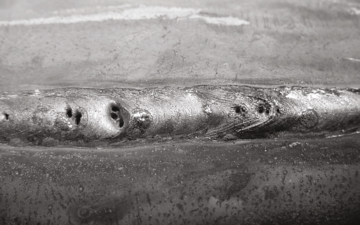What is Porosity in Welding: Recognizing Its Reasons and Enhancing Your Skills
What is Porosity in Welding: Recognizing Its Reasons and Enhancing Your Skills
Blog Article
Porosity in Welding: Identifying Common Issues and Implementing Best Practices for Prevention
Porosity in welding is a prevalent concern that commonly goes unnoticed until it causes substantial issues with the stability of welds. This common defect can endanger the strength and sturdiness of welded frameworks, posturing security risks and leading to pricey rework. By comprehending the source of porosity and executing effective avoidance techniques, welders can significantly boost the high quality and reliability of their welds. In this conversation, we will certainly explore the vital aspects contributing to porosity development, examine its destructive impacts on weld efficiency, and talk about the best methods that can be adopted to lessen porosity occurrence in welding procedures.
Typical Reasons of Porosity

One more regular perpetrator behind porosity is the visibility of impurities externally of the base steel, such as oil, oil, or corrosion. When these pollutants are not successfully gotten rid of prior to welding, they can evaporate and end up being caught in the weld, triggering problems. Utilizing filthy or wet filler materials can present contaminations right into the weld, contributing to porosity problems. To reduce these common root causes of porosity, comprehensive cleaning of base steels, appropriate protecting gas selection, and adherence to optimum welding criteria are necessary methods in achieving high-quality, porosity-free welds.
Influence of Porosity on Weld High Quality

The presence of porosity in welding can significantly endanger the structural honesty and mechanical buildings of welded joints. Porosity develops spaces within the weld steel, compromising its total strength and load-bearing capability. These voids function as stress focus factors, making the weld a lot more susceptible to splitting and failure under applied lots. Additionally, porosity can reduce the weld's resistance to rust and various other environmental aspects, better decreasing its long life and efficiency.
One of the main repercussions of porosity is a reduction in the weld's ductility and sturdiness. Welds with high porosity levels often tend to show reduced impact strength and decreased ability to deform plastically prior to fracturing. This can be specifically concerning in applications where the welded elements undergo dynamic or cyclic loading problems. Additionally, porosity can restrain the weld's ability to properly transmit pressures, leading to premature weld failing and possible More about the author security hazards in essential structures.
Best Practices for Porosity Avoidance
To improve the architectural honesty and quality of welded joints, what details measures can be executed to lessen the event of porosity during the welding process? Utilizing the proper welding technique for the particular product being bonded, such as readjusting the welding angle and gun position, can even more protect against porosity. Regular evaluation of welds and instant remediation of any type of concerns recognized during the welding process are necessary techniques to protect against porosity and produce premium welds.
Relevance of Correct Welding Techniques
Executing correct welding methods is paramount in making certain the structural integrity and high quality of welded joints, constructing upon the foundation of reliable porosity prevention measures. Too much heat can resource lead to raised porosity due to the entrapment of gases in the weld pool. In addition, utilizing the ideal welding specifications, such as voltage, existing, and travel rate, is essential for attaining sound welds with very little porosity.
Furthermore, the option of welding procedure, whether it be MIG, TIG, or stick welding, ought to line up with the specific demands of the task to guarantee optimum results. Appropriate cleansing and prep work of the base metal, in addition to picking the right filler material, are additionally necessary elements of competent welding methods. By sticking to these best practices, welders can lessen the risk of porosity development and create high-grade, structurally sound welds.

Testing and Top Quality Control Actions
Checking treatments are necessary to identify and prevent porosity in welding, making sure the stamina and toughness of the last item. Non-destructive testing methods such as ultrasonic testing, radiographic screening, and aesthetic examination are frequently employed to determine possible defects like porosity.
Conducting pre-weld and post-weld evaluations is likewise essential in maintaining quality assurance requirements. Pre-weld inspections entail confirming the materials, tools settings, and sanitation of the job location to avoid contamination. Post-weld inspections, on the various other hand, evaluate the last weld for any issues, including porosity, and confirm that it fulfills specified criteria. Executing a thorough quality assurance strategy that includes detailed testing treatments and evaluations is extremely important to decreasing porosity additional info concerns and guaranteeing the total quality of bonded joints.
Verdict
In verdict, porosity in welding can be a common issue that affects the high quality of welds. By recognizing the common root causes of porosity and executing finest methods for avoidance, such as correct welding techniques and testing steps, welders can make sure top quality and trusted welds. It is vital to prioritize prevention approaches to decrease the event of porosity and keep the honesty of bonded frameworks.
Report this page